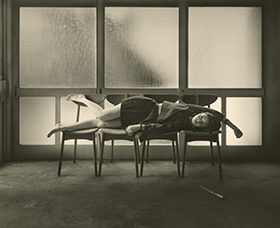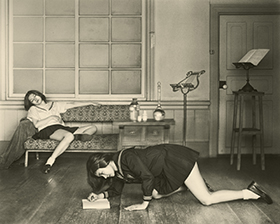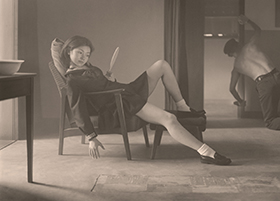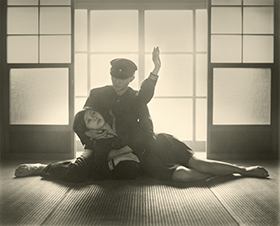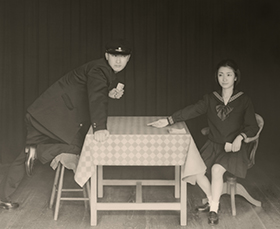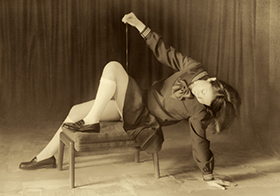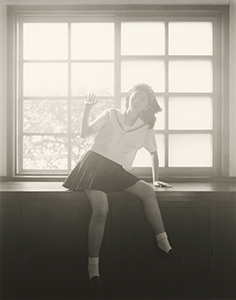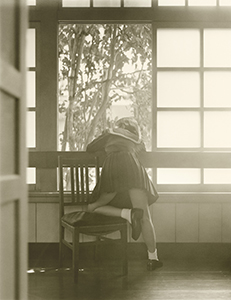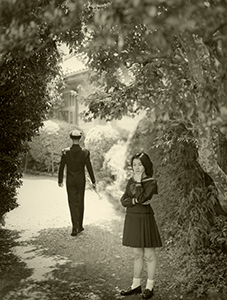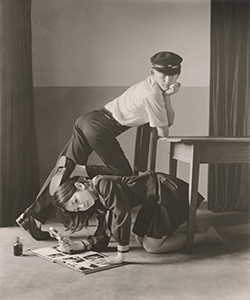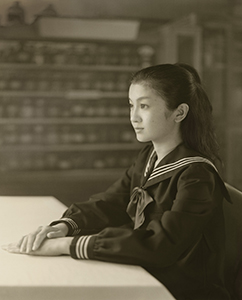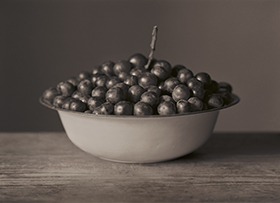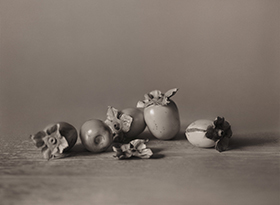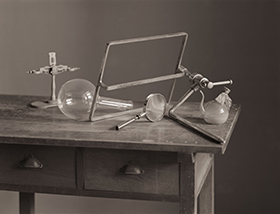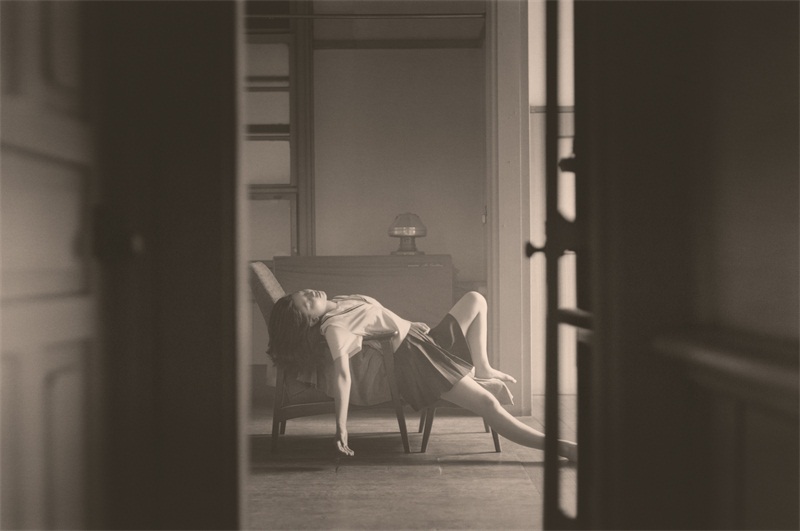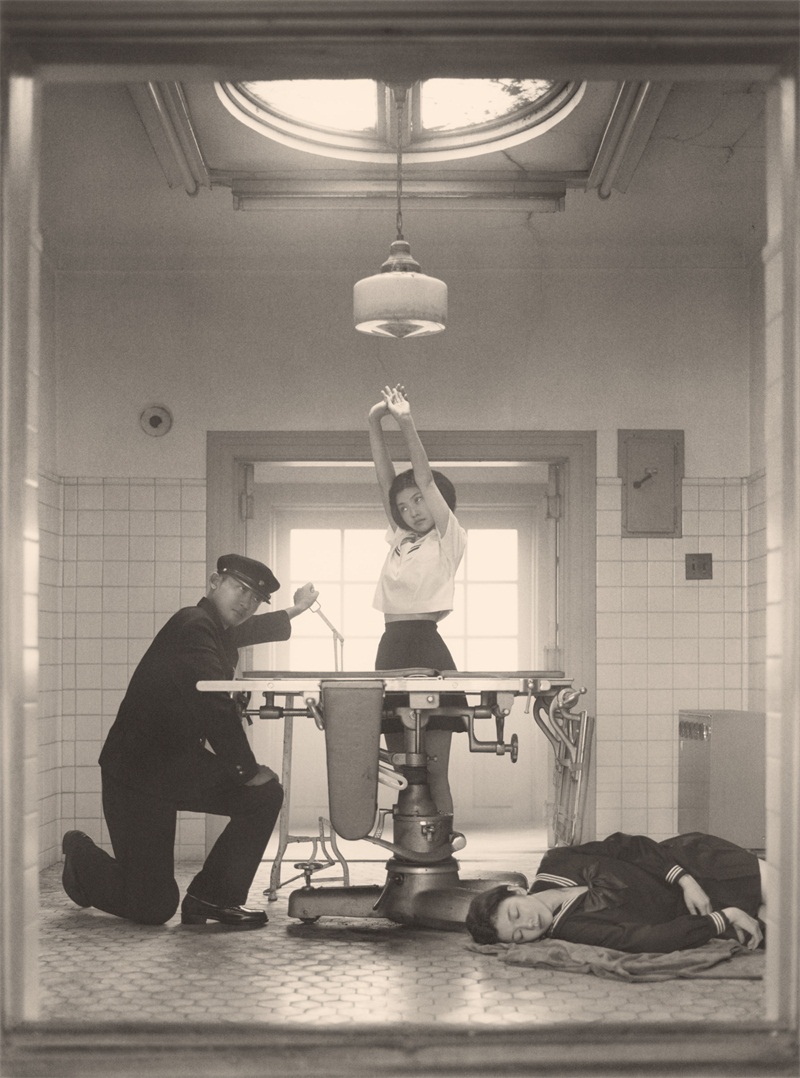Finding Balthus in the Fog
Hisaji Hara
In 2005, during one of those long autumn nights, I was slipping in and out of sleep, when a painting by Balthus suddenly and inexplicably flashed across my mind. I immediately began searching on my computer and discovered a small image of “Thérèse Dreaming” (1938). The painting, displayed in a corner of the LCD screen, emitted a strange brilliance. It somehow seemed to easily encompass the value of all art that I had encountered until then, possessing an authenticity that exceeded those of works that I had wholly admired in the past. From this moment, I began to foster a strong desire to pursue the nature of this authenticity in detail.
Despite the intensity and certainty of my impression of this authenticity, so prone was it to the vicissitudes of intuition that I feared, without attention, it might shrink into the deep recesses of memory; I myself found it difficult to place a name on what I had experienced. I wanted to fix that flickering impression to solid, tangible evidence. Eventually, I arrived at the thought of reproducing it in the form of photography.
Photography is a medium that endows the artist with modern technology beyond the technical skill of what he or she is individually capable of achieving. It affords me a more technically advanced point of departure. Without having to personally engineer and build a camera, I am allowed to use such equipment at my leisure.
Yet enhanced technical abilities made common in our day are also a double-edged sword, hiding the trap of modernism. On account of the industrial innovations that support their production, film, cameras, and digital imaging devices are fated to maintain standards of quality. The techniques of painting that Balthus acquired, however, vividly reflect convictions that predate modernity. Oils and canvases as materials are hardly subject to the changes seen in film and cameras that result directly from improvements on the production line. It follows convention that in search of superior paint, an artist should decide to blend pigments and oils by his own hand.
That is why the study of Balthus’ work through photography implies the freeing of the equipment and materials of the practice -- hardware forged under the aegis of modernism-- from modernist aesthetics. It is a kind of challenge that I pose to myself, a child of the mid-20th century. It is also a courteous betrayal, if I may say as much. I am compelled to openly declare the necessity of a betrayal against both myself and the whole of modernity.
To betray modernism means at once to exceed its truths, and to pass beyond modernist notions of self. An “artist” embodies the modernist parameters of the self applied to individuals who create objects. Balthus did not define himself with this word. Throughout his life he referred to himself not as an artist, but as a painter. The term speaks of a man who worked outside of modernistic delineations.
Modernism’s idea of self precludes the possibility of realizing transgenerational undertakings. For instance, the mounds of shells spanning several kilometers that have been discovered through archaeological digs to date back to ten thousand years ago, provide proof of a site of Land art, which a number of communities shaped collectively over the centuries. Yet as modernist thinking is inclined to reduce such efforts to the genius and talent of a single artist, it cannot help but neglect the value of what has been accumulated through vast expanses of history. Balthus was undoubtedly aware of this dangerous tendency, always cautiously negotiating his relationship with the view of the individual artist. Calling himself “the last feudalist painter,” he conferred to his works an atemporal authenticity gathered from the ages before art became an entity to be discriminatorily guarded.
The study of Balthus’ paintings through photography requires one to absorb his mindset and liberate the camera and photosensitive materials from modernist conceptions. In other words, it requires one to disregard modernism’s self-conscious distinction between painting and photography and place the two media on equal footing. This might involve recalibrating the optically correct linear perspective achieved by the lens to embrace the allure of interpretive perspectives shown on the canvas. With the fundamental premise that optical lenses can never fully experience and represent our reality, I arrived at the practice of compensating for what is lost in mimesis -- searching for methods to strengthen the intimacy between film and paint.
These theories guided various technical choices made during the shooting process, such as shifts in focus during multiple exposures, the diffusion of artificial fog to emphasize aerial perspective, or the decision to grant the visual depth of a hundred meters to a physical distance of ten. Why, though, one might ask, would fog be necessary? It is not, to be sure, to enhance any appeals to pathos. Rather, it allows the space that one feels when passing between a table and a chair to be translated into the vocabulary of light and darkness.
In transposing painting into photographic image, what transform first and foremost are my own perceptions. What, for me, is painting? What is photography? And what can be said of my consciousness that divides these two from one another?
Take the poses of the figures depicted by Balthus; only when attempting a photographic translation do they strike one as remarkably odd. One also realizes simultaneously that these bizarre postures appear innocuous on canvas. That is to say that the pose of an individual within a painting can be an abnormal form for the body to assume in reality, while still appearing natural to viewers. It is therefore necessary to first abstract the painting’s composition for an almost geometrical analysis, and subsequently restructure the abstracted parts for the photograph. For example, if I were to observe that the figures in the painting are arranged on a diagonal line through the canvas, I would strive to adhere to this particular guideline in the photographic version. Even if this methodology were to produce physically unnatural poses, I trusted that it would settle into the finished image as a compositional element.
After years of taking photographs as photographs, I generated this approach only through contemplating the conversion of Balthus’ paintings.
On the Photographic Process
The selection of the setting was a fundamental, determining factor for these works. My choice for a location was not the result of extensive research, but was in fact due to a serendipitous encounter. When I was asked by a fashion designer friend to collaborate on a catalogue shoot, it had already been screened as a location for the project. Erected during the Taisho era (1912-1926), this private sanatorium was operational until 1965, with a multi-compound facility including consultation and waiting rooms, operating tables, an X-ray room, and an additional wing for overnight patients. Even after closing its doors, the family preserved the buildings for more than forty years.
Following my first experience at the old sanatorium, I decided to create the Balthus series. The family of owners who had maintained its condition generously granted me free access to the space for over a year. They accepted my request to air out old furniture that had been shuttered in storage, and accommodated the need to rearrange the interiors. Most of the furniture, decorative props, and tools that are shown in the series were once in use during the operating life of the original facility.
With a machine large enough for a concert hall, we often filled entire rooms with thick, heavy artificial fog. A 30-minute wait would then reveal a space with the depth and sensory nuance of a painting. Aerial perspective was controlled by manipulating the concentration of fog hanging in the air. The distance between a chair and a table that Balthus had depicted, and the feeling it imparts to a person passing through, were converted into light and shadow designed by fog.
Directing the models proved extraordinarily difficult. This was primarily due to the fact that many of the poses painted by Balthus were simply impossible to reenact with the human body. Adding to our challenges, the fog retained optimal conditions only for a brief couple of minutes. To hold an uncomfortable pose during that window of time was a wearing task. Eventually, a shot would come to be considered relatively well executed if the pose could be held for ten seconds. More than a few pieces were dictated by exposure times of less than a second, before the model would lose balance and fall, or any muscles could be torn. Yet with the natural lighting dimmed by fog, shutter speeds of over several seconds were to be expected. Capturing crisp outlines of a body contorted in the most improbable of positions in a darkened room: by all standards of logic, the odds were stacked against us. I feel that the superhuman efforts of the models were what saved the undertaking.
(All of the photographs were shot with natural light. The lighting design of the structures communicated the style of their architecture well, and it became apparent as our work progressed that supplemental artificial lighting could efface this relationship. We resorted to the bare necessity of board reflectors while on location.)
Multiple exposures were heavily employed on a number of works staged at the clinic. I attached an enormous matte box with one-meter sides to the lens, and hung shades to hide portions of a single sheet of film for separate exposures of the same scene. The process was a natural solution when an image called for the model to play two roles within a single frame. Balthus himself had never worked with a great variety of models, preferring instead to portray the same selectively handpicked individual over a long period of time. I followed his example and for the whole series worked exclusively with the same two models who had succeeded in matching what I envisioned for the project. Multiple exposures were thus a pragmatic method of relying on the model who consistently embodied my visualization, particularly while photographing scenes that required multiple female figures.
Another significant reason for the frequency of multiple exposures in this project was my intent of dissolving the “correct” rules of perspective demonstrated by the lens. When the focus is manually shifted between exposures, or the thickness of fog is adjusted, or if the light filtering through the windows changes suddenly, irregularities occur to the strength of light registered by the lens. Such images sharing a sheet of film fail to maintain the integrity of “correct” perspective. Rooms and the lives within them appear warped as a result. I find that I am profoundly interested by these distortions, these irregularities of atmosphere, which resemble Balthus’ treatment of space through paint.
